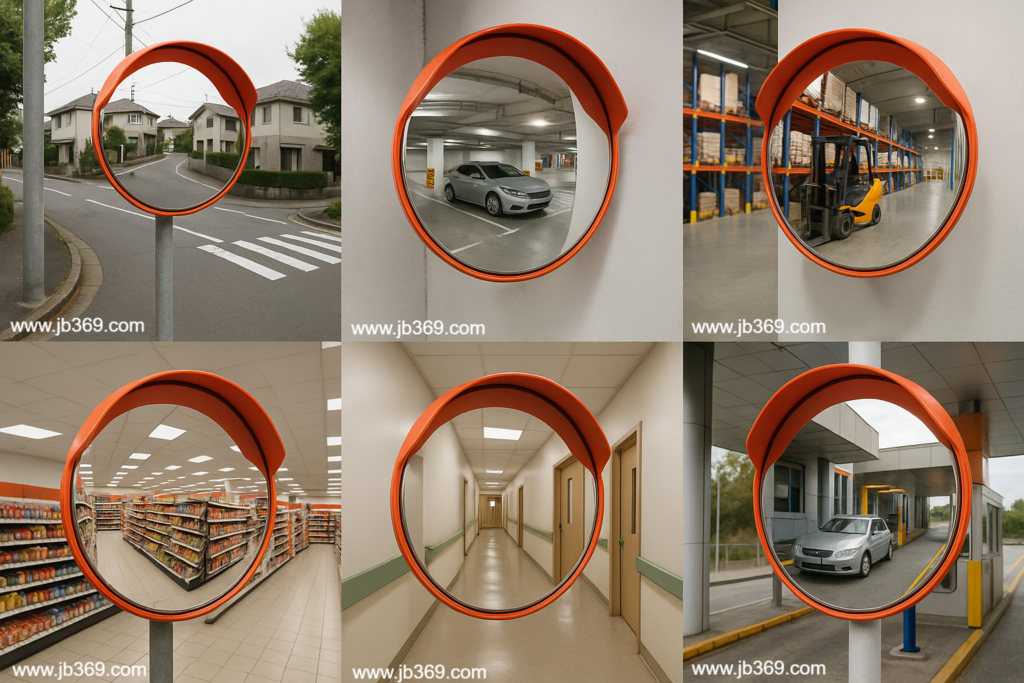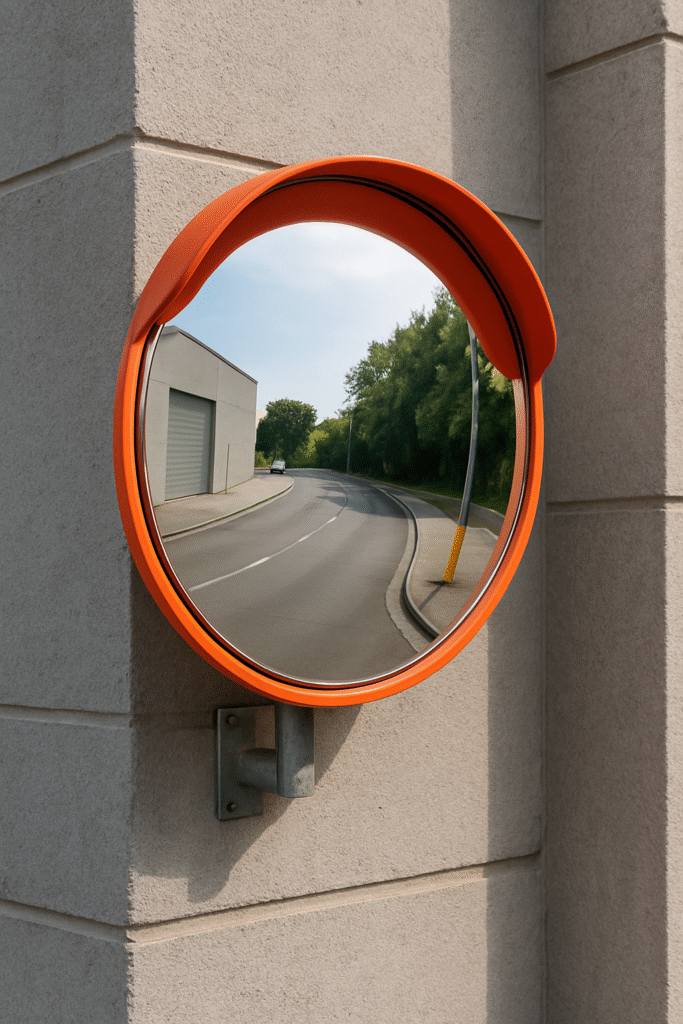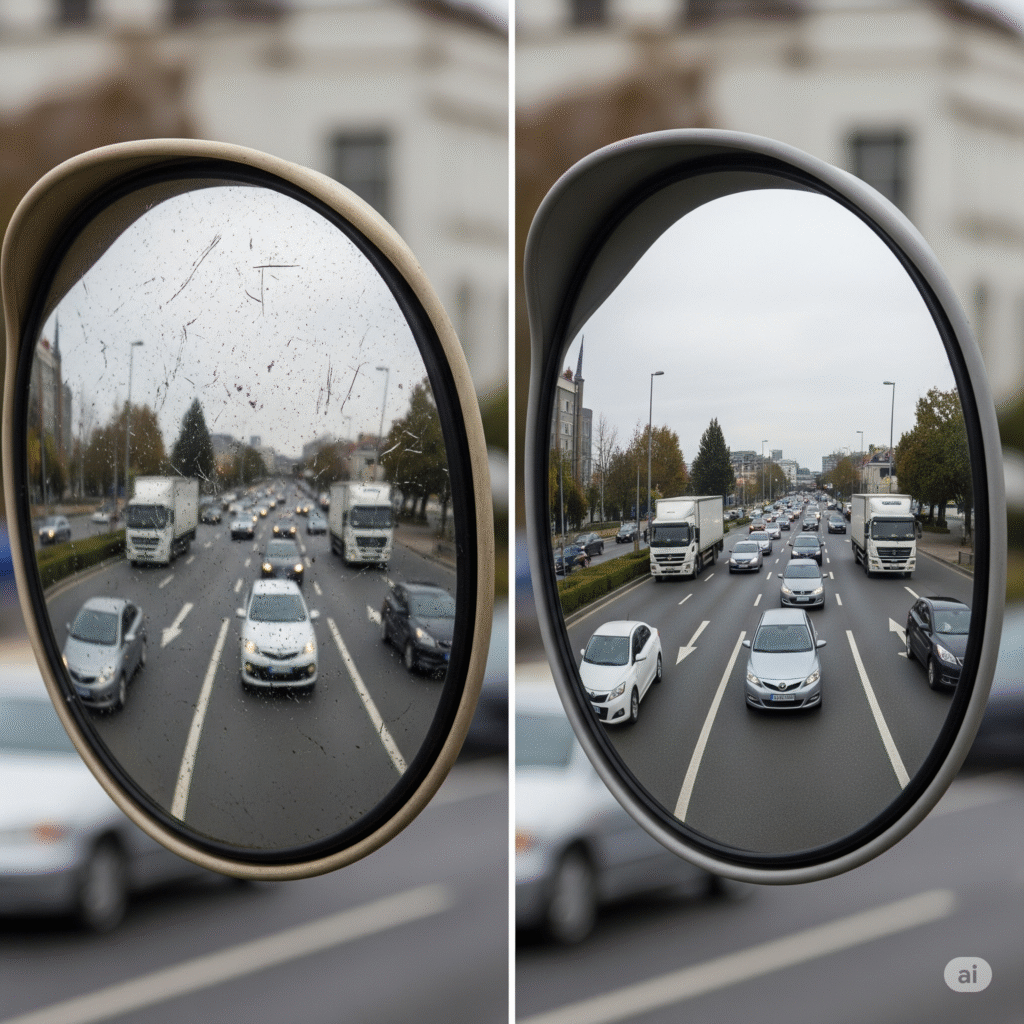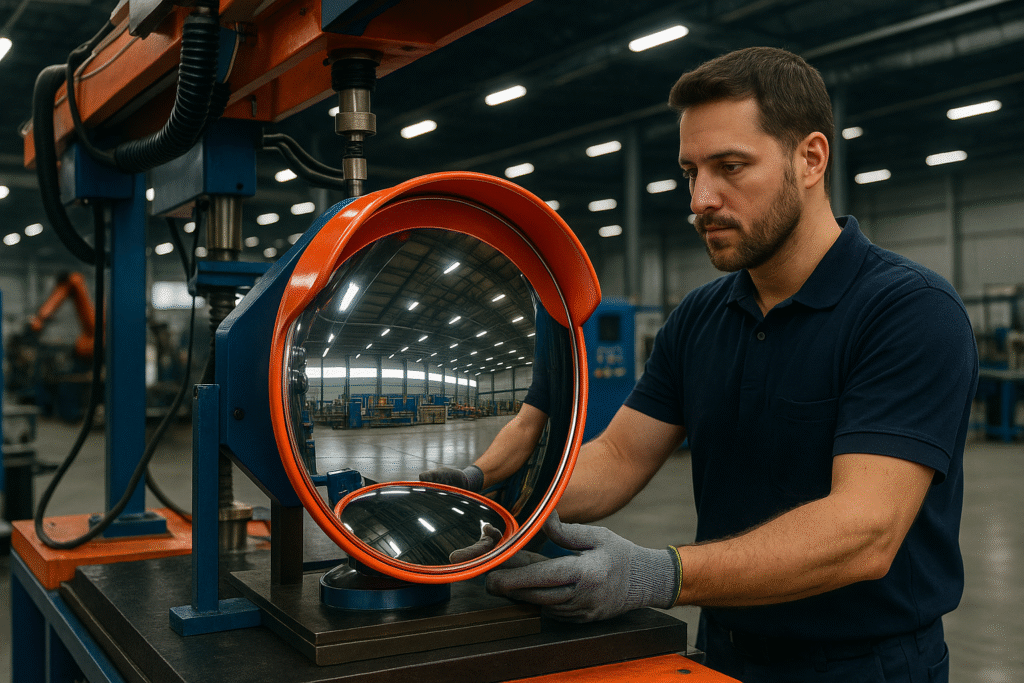Workplace safety is one of the most critical responsibilities for business owners and facility managers. In busy environments like warehouses, factories, construction sites, and industrial yards, the combination of equipment, vehicles, and people creates a high-risk setting for accidents. Many of these incidents occur because of poor visibility, blind spots, and limited reaction time.
One of the most overlooked yet highly effective solutions to improve visibility and reduce accidents is the installation of convex mirrors. These mirrors expand the field of vision for drivers, operators, and pedestrians, allowing them to anticipate and avoid potential hazards.
This article explains how convex mirrors function as a proactive safety measure and why they should be a standard feature in any workplace with moving equipment, vehicles, or foot traffic.
The Visibility Problem in Workplaces
Many workplace accidents stem from limited visibility. Tight corners, high shelving, partitions, machinery, and structural obstructions all contribute to blind spots that hide people or equipment from view.
Common high-risk areas include:
- Forklift crossing points
- Warehouse aisles and intersections
- Entry and exit gates
- Loading docks
- Machinery corners
- Parking lots and vehicle lanes
- Hallways and corridors
When an operator or driver can’t see what’s coming, they are more likely to collide with another vehicle, person, or structure. Accidents in these areas often lead to serious injury, downtime, and damage to property or goods.

What Convex Mirrors Do
Convex mirrors are curved outward, creating a wide-angle reflection that shows a larger area than flat mirrors. They allow users to see around corners or over obstacles, eliminating blind spots and improving decision-making.
Here’s what they provide in a workplace:
- A broader field of vision for equipment operators and drivers
- Real-time visibility at blind intersections
- Pedestrian awareness for forklift drivers
- Advance warning of approaching vehicles or individuals
- Improved reaction time and space for evasive action
By offering early visual cues, convex mirrors help prevent last-second reactions that often lead to injury or damage.

Areas Where Convex Mirrors Reduce Accidents
Installing convex mirrors in the right spots is essential for accident prevention. Below are the most common workplace zones where they reduce risk:
1. Warehouse Aisles and Intersections
Forklifts often travel through narrow aisles with limited sightlines. Mirrors placed at aisle ends or where aisles intersect allow operators to see approaching vehicles or workers and avoid collisions.
2. Loading Docks and Bay Areas
Convex mirrors give drivers visibility to dock areas and blind spots near bay doors. This reduces the chance of hitting workers, pallets, or infrastructure during loading and unloading.
3. Internal Corners and Walls
In facilities with tight layouts, workers or machinery may come around a corner with no warning. Mirrors at corners give a view of incoming traffic, reducing side-impact or walk-in accidents.
4. Vehicle and Forklift Routes
Mirrors help vehicle drivers see pedestrian crossings and forklift zones, preventing tragic impacts where paths intersect.
5. Employee Exits and Entry Points
Mirrors near doors or hallway intersections help employees check for traffic before stepping into high-risk areas, especially where forklifts or tuggers operate.
6. Construction Sites and Outdoor Yards
Mirrors help operators of cranes, dump trucks, and other large equipment see behind or beside them in irregular or outdoor terrain. This is crucial for spotting workers on foot in unpredictable areas.

Key Benefits for Accident Reduction
The impact of convex mirrors on accident prevention goes beyond visibility. Their presence actively changes behavior and improves safety in several ways.
1. Increased Awareness
When workers and drivers can see more, they stay alert and cautious. Convex mirrors prompt them to scan their environment, which reduces careless movement.
2. Faster Response Time
Mirrors help detect movement earlier, giving drivers more time to brake, swerve, or stop before a collision. This is especially important for forklifts or carts with limited maneuverability.
3. Reduced Backing Accidents
Backing up is a major cause of workplace accidents. Convex mirrors positioned behind or above equipment zones help operators see what’s behind them before reversing.
4. Safer Pedestrian Navigation
Mirrors protect foot traffic by making them visible to drivers. Employees are also more likely to pause and look both ways if mirrors are clearly placed at intersections.
5. Cost Avoidance
Every avoided accident saves the business money, on repairs, medical costs, compensation claims, and lost productivity. Convex mirrors are a low-cost investment with high payoff.

Choosing the Right Mirror for Your Workplace
To ensure convex mirrors perform effectively, selecting the right type for your environment is critical. Consider these factors:
1. Size
Larger mirrors provide a wider field of view. Choose 26 to 36-inch mirrors for large areas like docks or intersections. Use 12 to 18-inch mirrors in tight indoor spaces.
2. Material
Use polycarbonate or acrylic mirrors for durability and shatter resistance. These materials are safe for industrial environments with vibration, dust, and impact risk.
3. Mounting Type
Wall mounts work well for internal use. Pole or ceiling mounts are better for high-traffic or multi-directional intersections.
4. Weather Resistance
For outdoor or semi-outdoor sites, ensure mirrors are UV-resistant, waterproof, and have anti-fog coatings.
5. Adjustability
Use mirrors with swivel brackets so the angle can be fine-tuned for maximum coverage.

Placement Best Practices
Proper placement ensures that convex mirrors are noticed and used:
- Install at eye level of forklift or vehicle operators
- Angle mirrors to show maximum intersection visibility
- Keep away from distracting backgrounds
- Use signage nearby if necessary to draw attention
- Ensure proper lighting is present, especially in indoor or shaded areas
Before finalizing placement, test mirror angles during normal operations. Adjust based on driver or pedestrian feedback.
Maintenance Is Key
A dirty or damaged mirror is almost as bad as no mirror at all. To maintain effectiveness:
- Clean mirrors weekly or biweekly
- Check for cracks or fading
- Replace broken brackets or misaligned mounts
- Reinspect after any structural changes to the facility
Make convex mirror inspection part of your safety audit checklist.
Final Thoughts
Convex mirrors are a simple, low-maintenance, and cost-effective tool to reduce workplace accidents. By eliminating blind spots, improving visibility, and supporting safe behavior, they help prevent incidents that lead to injury, downtime, and liability.
For business owners and facility managers serious about accident reduction, convex mirrors are a smart addition to the safety infrastructure. Evaluate your workspace, identify high-risk areas, and install the right mirrors to protect your people, equipment, and operations.
Looking for a custom convex mirror manufacturer or supplier? Struggling to find the right factory to bring your vision to life? We’ve got you covered! At our place, we craft top-quality convex mirrors with precision and care. Big or small, your needs are our mission. Let’s launch your mirror project and take your product line to the next level! Click here to contact
